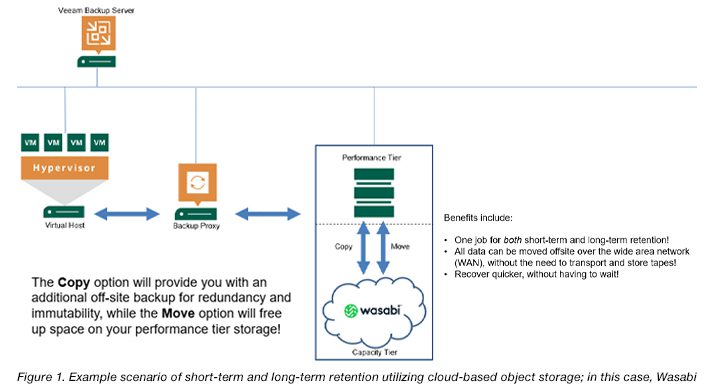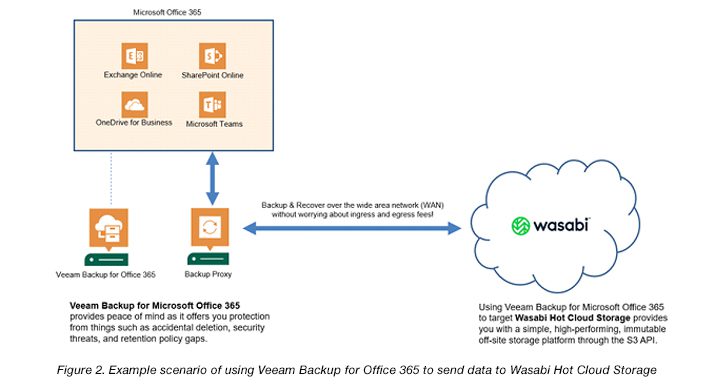How organizations can optimize your data protection strategy:
Protect one of your most valuable assets

Your data is one of your most valuable assets. It needs to be accessible and recoverable at any time, regardless of whether it resides on-premises, in the public cloud, or both.
An outage or a data breach can make or break a business. To avoid becoming a statistic, you have to invest time and resources into determining the proper recovery point objectives (RPOs) and recovery time objectives (RTOs) needed to reduce the impact of any incident, and then develop a strategic disaster recovery (DR) plan around it all.
Oftentimes, however, businesses miss the mark. Some fail to effectively integrate backups into their DR plans, leaving gaps in their overall business continuity (BC) strategy. Some don’t regularly test and update their plans. Others have legacy, and overly complicated backup systems that fail to meet the business’ requirements.
There are many flavors of data protection solutions, and every company’s needs are unique. However, you should keep in mind several common guidelines to simplify your backups and optimize your data protection strategy.
1. When time is paramount, look beyond tape
You’ve likely heard the term “air gap” associated with a data protection strategy. Air-gapped data is traditionally offline and not capable of being accessed or held hostage by ransomware. In today’s landscape, where there is a potential cyber-attack around every corner, having an air-gapped copy of your data has never been more important.
There are effective ways to achieve this and, in some cases methods, to avoid. When the recovery time objective is short, tape falls under the latter.
While tape technology is removable and provides you with an offline copy, it comes with disadvantages. First, it introduces complexities to your environment by adding more infrastructure. Secondly, without a proper tape management system in place, you risk increasing overhead. In addition, restoring backups from tape is more time consuming, especially if the tape needs to be retrieved from another location. If you have more aggressive RPOs and RTOs, this method may not meet the defined objectives of the business.
2. Avoid data protection silos
As technology has advanced, many organizations may have added on multiple point solutions to address their evolving data protection needs. Perhaps they started with a solution for physical backups. But then, as they moved toward virtualization, they acquired a new solution for virtual server backup because their older solution didn’t support these needs. And so on and so forth.
The problem with this approach is that you now have an abundance of solutions for different workloads, creating unnecessary complexities and making it difficult to manage. If you combine this with managing additional storage mediums like disk, tape, or cloud, it becomes overwhelming.
Instead of taking a silo-based approach to address different workloads, look to consolidate your backups under fewer panes of glass as part of your greater long-term plan. Focus on your business needs and applications, and choose solutions that fit accordingly.
3. Strategically combine data protection and cloud-based applications
The term “air gap” has another meaning. Today, air-gapped data can also refer to cloud data protected by “immutability” features that guard against malware, accidental deletion, and ransomware. Immutable data can’t be altered by anyone, even the cloud owner, for a pre-determined period. This form of air-gapping has further opened the doors to the cloud with business.
Cloud backups are obviously nothing new, but some organizations are finding new cost savings and simplifying their backups by combining complementary data protection solutions. The integration of Veeam and Wasabi is one such example that encompasses both on-premises and SaaS-based data protection as an end-to-end hybrid cloud solution approach.
With Veeam version 10, you can do more than “tier” your data off to the cloud for long-term retention; you can assign a “copy” storage policy as well. That copy is immediately sent to cloud-based object storage. This gives you with multiple copies of your backups – satisfying the industry standard 3-2-1 backup rule (3 copies, 2 types of media, 1 off-site) – without the need for tape infrastructure. This simplifies your data protection strategy while meeting the same industry standard for backups.
Wasabi’s off-site cloud-based S3-Compatible object storage gives you an additional storage medium, along with the air-gapped copy, for an extra layer of protection from ransomware, for example. Furthermore, with Wasabi you only pay for the data you use, with no fees for data interaction. Things like ingress, egress, GET/PUT API requests, etc., are all built in.
Together, they also make it easy to pre-seed your storage buckets if you’re looking to send a large amount of data. Because Veeam is compatible with the Wasabi Ball seeding device, you don’t have to wait to send terabytes or even petabytes of data over the WAN, potentially saving weeks of time. Plus, there are no added costs beyond the transfer appliance rental fee.
There’s no one-size-fits-all solution
The combination of Veeam and Wasabi is just one of the myriad possibilities out there. But it’s a good example of what you should be looking for as part of your data backup strategy.
Backups don’t need to be complicated. It’s possible to meet the same standards of data protection without piling up infrastructure or point solutions and while maintaining aggressive RPOs and RTOs. The right combination of solutions can support your long-term DR plans, control costs, and keep your most important data safe.
If you have questions about how to simplify your data protection and backups or what combination of solutions would work best for your organization, contact your SHI account executive.






